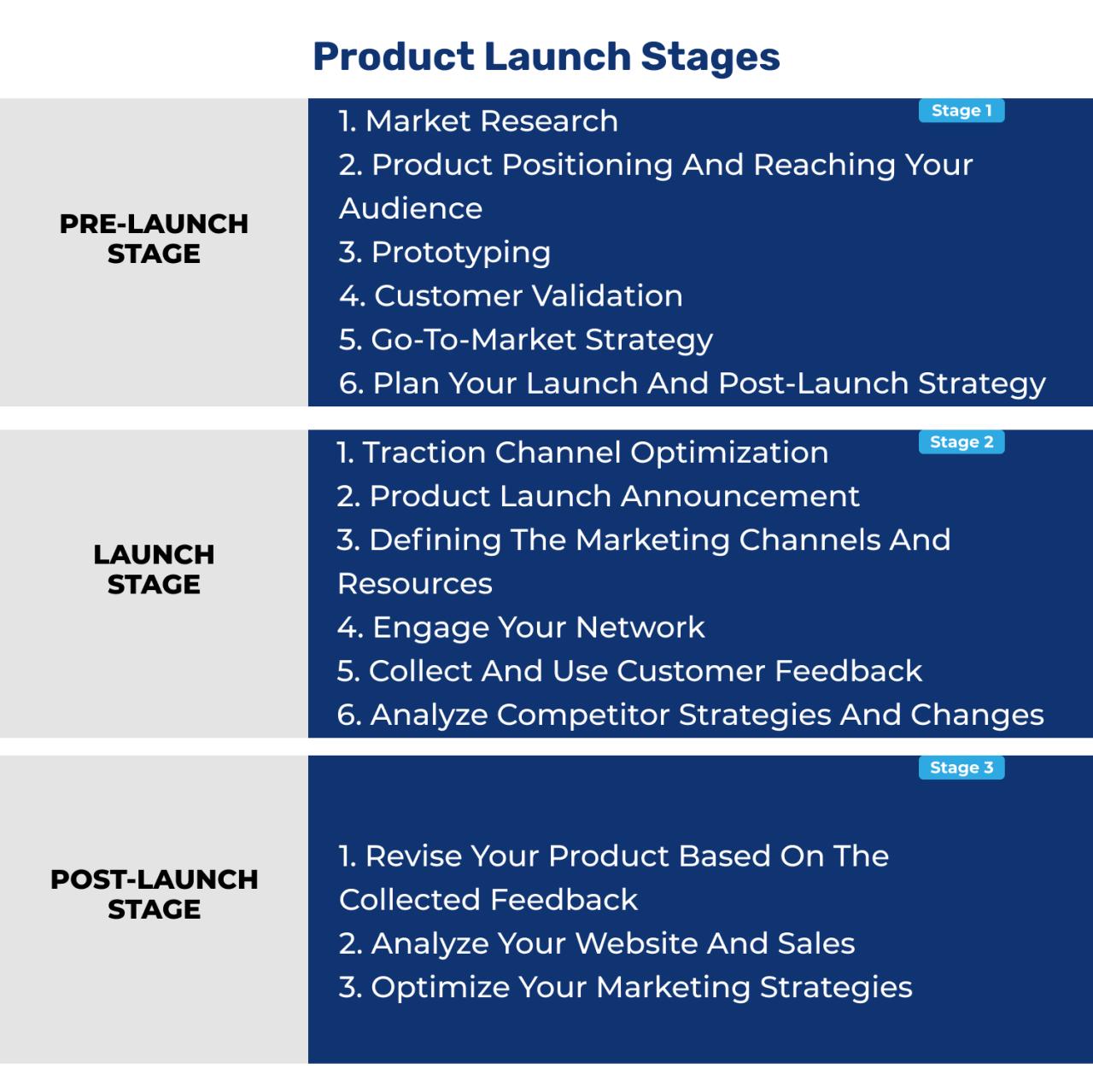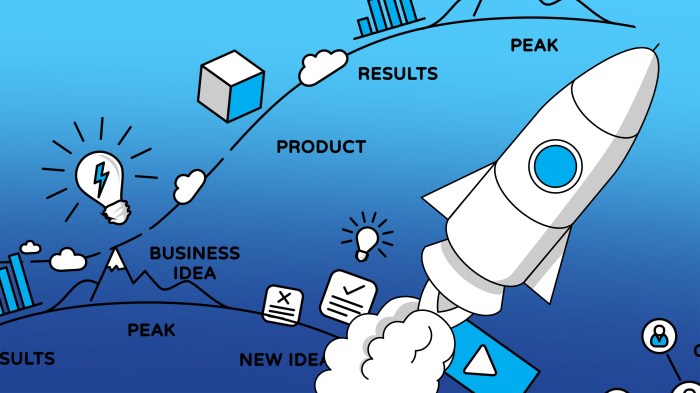
Launching a new product is a pivotal moment for any business. Success hinges not just on a great product, but on a meticulously planned and executed launch strategy. This exploration delves into the multifaceted world of optimal product launches, examining pre-launch anticipation building, the launch event itself, and crucial post-launch activities to sustain momentum and maximize impact.
From crafting compelling marketing campaigns and engaging influencers to managing technical aspects and gathering vital customer feedback, we’ll cover the key elements that separate successful launches from those that fall short. We’ll also explore how to tailor strategies to different market segments and allocate resources effectively, ensuring a return on investment that aligns with your business goals. Ultimately, understanding these strategies will equip you with the knowledge to navigate the complexities of a product launch and achieve remarkable results.
The Launch Event Itself

A successful product launch hinges significantly on the execution and impact of the launch event itself. The chosen format, the quality of the presentation, and the seamless management of technical aspects all contribute to a memorable and effective launch. Careful planning and attention to detail are paramount to maximizing the event’s reach and generating excitement around the new product.The selection of the appropriate launch event format is crucial and depends on several factors, including budget, target audience, and product complexity.
Product Launch Event Formats: A Comparison
Different formats cater to different needs and audiences. In-person events offer a powerful, tangible experience fostering direct interaction and networking opportunities. However, they are typically more expensive and geographically limited. Virtual events, on the other hand, provide unparalleled scalability, reaching a global audience at a potentially lower cost. Hybrid events combine the benefits of both, allowing for a wider reach while maintaining a sense of community for those attending in person.
The choice depends on the specific goals and resources available. For example, a new software targeting a global developer community might benefit from a virtual launch with interactive online demonstrations, whereas a luxury goods company might prefer an exclusive in-person event to cultivate brand prestige.
Creating a Compelling Launch Video or Presentation
A compelling launch video or presentation is essential for capturing attention and conveying the product’s value proposition. It should be concise, visually appealing, and emotionally engaging. Consider incorporating high-quality visuals, including product demos, customer testimonials, and engaging graphics. The narrative should clearly articulate the problem the product solves, its key features and benefits, and its unique selling proposition (USP).
For instance, a video launching a new fitness tracker could show users actively using the device, highlighting its features like heart rate monitoring and sleep tracking, interspersed with testimonials from satisfied customers. The overall tone should align with the brand’s identity and target audience.
Managing the Technical Aspects of a Product Launch
Meticulous planning is crucial for ensuring a smooth technical execution. A detailed checklist should address every aspect, from website functionality and app performance to social media integration and live streaming capabilities. This involves rigorous testing of all systems well in advance of the launch date. Website performance should be optimized to handle high traffic volume, anticipating potential surges in user activity.
The app should be thoroughly tested for bugs and glitches across different devices and operating systems. Redundancy measures should be in place to mitigate potential technical issues. For example, having a backup streaming server in case the primary one fails during a live virtual launch. A dedicated technical support team should be on standby to address any unforeseen problems during the event.
Post-launch, monitoring website analytics and app usage is crucial for evaluating the event’s success and identifying areas for improvement.
Targeting Specific Market Segments

A successful product launch hinges not just on a great product, but on reaching the right people. Understanding and targeting specific market segments is crucial for maximizing impact and return on investment. This involves tailoring your marketing message and distribution channels to resonate with the unique needs and preferences of different demographic and psychographic groups.Tailoring launch strategies to different demographics and psychographics requires a deep understanding of your target audience.
Demographic segmentation considers factors like age, gender, income, education, location, and ethnicity. Psychographic segmentation, on the other hand, delves into lifestyle, values, attitudes, interests, and personality traits. By combining these approaches, you can create highly targeted campaigns that speak directly to the desires and motivations of specific consumer groups. For instance, a campaign targeting young adults might leverage social media influencers and emphasize trendy design, while a campaign targeting older demographics might focus on reliability, practicality, and ease of use.
Successful Niche Market Launches
Targeting niche markets can be a highly effective strategy, particularly for products with specialized features or addressing unique needs. Several companies have successfully launched products by focusing on a smaller, highly defined target audience. For example, consider the success of Peloton. By focusing on the fitness-conscious, affluent demographic willing to invest in premium home exercise equipment and digital subscription services, they created a highly successful and profitable niche.
Another example is Blue Apron, which capitalized on the growing interest in convenient, healthy meal options by targeting busy professionals and families seeking a time-saving alternative to grocery shopping and meal preparation. These launches demonstrate the power of focusing resources and messaging on a well-defined segment with specific needs and purchasing behaviors.
Reaching International Markets
Expanding into international markets requires careful consideration of cultural nuances, language barriers, and regulatory differences. Successful international product launches often involve adapting marketing materials and product features to meet local preferences. For instance, a food product might need to adjust its flavor profile or packaging to suit the tastes and cultural norms of a particular region. Furthermore, understanding local marketing channels and regulations is essential.
This may involve partnering with local distributors, employing multilingual marketing campaigns, and complying with specific advertising standards and regulations in each target market. Companies like Spotify, with its global reach and localized content offerings, exemplify a successful strategy for international market penetration. Their ability to tailor their music library and user interface to diverse cultural preferences has enabled significant global expansion.
Budgeting and Resource Allocation for Product Launches
A successful product launch hinges not only on a compelling product and effective marketing but also on meticulous budgeting and strategic resource allocation. Failing to properly plan for expenses and distribute resources across the various launch phases can severely impact the overall success, potentially leading to missed opportunities and financial setbacks. A well-defined budget provides a roadmap, enabling proactive management of funds and ensuring that critical activities receive the necessary support.Effective resource allocation is crucial for maximizing the return on investment (ROI) of a product launch.
It involves strategically distributing financial, human, and technological resources across different launch phases, from initial market research and product development to marketing campaigns and post-launch support. By prioritizing key activities and optimizing resource deployment, companies can streamline operations, enhance efficiency, and ultimately achieve their launch objectives.
Sample Product Launch Budget
The following is a sample budget for a hypothetical product launch, illustrating the various cost categories involved. These figures are illustrative and would need to be adjusted based on the specific product, target market, and launch scale.
| Category | Cost Estimate | Notes |
|---|---|---|
| Marketing & Advertising (Digital, Print, Social Media) | $25,000 | Includes campaign creation, ad placement, and social media management. |
| Launch Event (Venue, Catering, Entertainment) | $10,000 | Cost depends on the scale and location of the event. |
| Public Relations & Media Outreach | $5,000 | Covers press releases, media kits, and influencer marketing. |
| Website Development & Maintenance | $3,000 | Includes website design, development, and hosting. |
| Personnel Costs (Marketing Team, Event Staff) | $12,000 | Includes salaries, benefits, and potential bonuses. |
| Printing & Packaging | $2,000 | Covers costs associated with product packaging and marketing materials. |
| Contingency Fund | $3,000 | Allocates funds for unforeseen expenses or adjustments. |
| Total Estimated Budget | $60,000 |
Resource Allocation Across Launch Phases
Allocating resources effectively across different launch phases—pre-launch, launch, and post-launch—is paramount. The pre-launch phase necessitates significant investment in market research, product development, and marketing campaign planning. The launch phase demands a concentration of resources on event execution, media outreach, and initial sales generation. Finally, the post-launch phase requires resources for customer support, performance analysis, and ongoing marketing efforts.
A phased approach ensures resources are deployed strategically, maximizing their impact at each stage. For example, a significant portion of the marketing budget might be allocated to pre-launch activities to build anticipation and generate leads.
Pricing Strategies for New Product Launches
Several pricing strategies exist for new product launches, each with its own advantages and disadvantages. The optimal strategy depends on factors such as the product’s unique selling proposition, target market, competitive landscape, and overall business objectives.
- Premium Pricing: Setting a high price to position the product as exclusive and high-quality. This strategy works well for luxury goods or products with significant technological advancements.
- Penetration Pricing: Setting a low price initially to rapidly gain market share and build brand awareness. This is effective for products with high demand elasticity.
- Value Pricing: Setting a price that reflects the perceived value of the product relative to its competitors. This approach requires a deep understanding of customer needs and preferences.
- Cost-Plus Pricing: Setting a price based on the product’s cost plus a desired profit margin. This is a straightforward approach but may not be optimal in competitive markets.
For example, a tech startup launching a revolutionary smartphone might opt for premium pricing to highlight its innovative features and high-end specifications. Conversely, a company launching a new consumer product might use penetration pricing to quickly gain market share and establish a strong presence before competitors enter the market. A company launching a new software product might adopt value pricing by emphasizing the product’s efficiency and cost savings compared to competitors.
Mastering the art of product launch strategy requires a holistic approach, blending meticulous planning with adaptable execution. By understanding the nuances of pre-launch anticipation, the critical elements of the launch event, and the importance of post-launch engagement, businesses can significantly increase their chances of success. Remember that continuous monitoring, analysis, and adaptation based on performance data are essential for maximizing the impact of your product launch and achieving sustainable growth.
A well-executed launch isn’t just about a single event; it’s about building a foundation for long-term market presence and customer loyalty.
Clarifying Questions
What is the ideal length of a product launch campaign?
The ideal length varies depending on the product, target audience, and budget. Shorter, focused campaigns can be effective, while others may benefit from a longer, more sustained approach.
How important is social media in a product launch?
Social media is crucial for generating pre-launch buzz, reaching target audiences, and driving engagement. A well-defined social media strategy is essential.
What if my product launch doesn’t meet initial sales targets?
Analyze sales data, customer feedback, and marketing performance to identify areas for improvement. Adapt your strategy based on these insights.
How can I measure the ROI of my product launch?
Track key performance indicators (KPIs) like website traffic, conversion rates, customer acquisition cost, and customer lifetime value to assess ROI.




